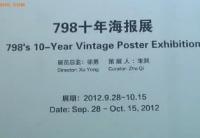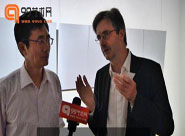Chinese Experimental Photography(节选)
By Li Xianting
To put photography into the category of contemporary art is to distinguish it from the news and other forms of functional photography because those other forms are judged by criteria which are not "artistic", just as video art is not the same as television news. Photography and video fall under the category of art, though they are merely one type of media for artists to use.
At the end of the 1970's, the April photography Group exhibition not only had huge repercussions in Chinese society, it became a way for photography's change from a mere tool to a medium of individual expression. The works shared a similar point of view with those of the "Stars" Group exhibition (Xingxing) and the "Scars Group" in Sichuan Province. They were reactions to the state of photography since 1949, especially the Cultural Revolution photography, which arranged people in artificial positions instead of representing their real lives. The new works focused on reality, nature and individual perspectives. Representative artists were Wang Zhiping and Li Xiaobing. From a linguistic perspective, photography of this period was still considered "traditional," in the same way that the Scars Group didn't reject the ideas of realist writing.
Afterwards, the photography world [in China] underwent a structuralist phase, but no group of photographers as influential as the April Photography Group came about. It wasn't until the 1980' sand early 1990's that Lu Nan, Zhang Haier, Gao Bo, Han Lei and Yuan Dongping emerged. Photography became a "sensitive" topic in contemporary art. First, the photographers took as their starting points sensitive topics: Lu Nan's mental hospitals and Chinese Christians, Zhang Haier's "bad girls", Han Lei's migrant workers, Yuan Dongping's mental hospitals and poor people, etc. Also, the photographic language they used was not traditional, instead they chose to emphasize the subjective perceptions so that one could detect the involvement of the photographer, sometimes achieving a bizarre effect. For example, Zhang haier emphasizes his own movement in the photographic process, giving his photographs a live effect and also a sense of the disorder of people's lives. Hai Lei's "On the Railways" gives the impression that the photographer is talking to his subjects, strengthening the effect that these victims are panicked and helpless.
Whenever a trend has appeared in Chinese contemporary art, this is the result of a certain influence from the international scene. In the 1990's, with more artists going abroad to participate in exhibitions, this influence has entered China more quickly. When photography became the trend abroad in the 1990's, is also became popular in China. From the start, Chinese artists had always liked cameras, so doing photography was like "driving a light carriage on a familiar road." When photographers started doing more conceptual work and participating in photography exhibitions, photography started to become and eye-catching phenomenon.
In the mid-90's, as consumer culture grew, society became immersed in a certain kind of trivial daily ritual that had a direct effect on artists, shifting their focus towards the daily rituals of life and making their art more varied. Western art went through this kind of shift in the 60-70's. in the 60's and 70's, the hippie and punk movements, the American involvement in the Vietnam War, the may student riots in France, all shifted the focus of contemporary art towards topics that were both varied and ordinary. As South American artist Leo Nilson said in 1992, "We are the generation without a revolution. This generation is the generation of the everyday."
Hong Hao, in the late 90's, focused a portion of his work on consumer culture, using photography and the computer to create "Yes, I'm Gnoh", in which he used the computer to give himself blond hair and blue eyes and turned his name "Hong" around into the unpronounceable "Gnoh." "This attempt to combine Chinese and Western culture turns out to be very awkward", he notes. "Hello Mr. Hong" appropriates the lifestyle propagated by contemporary advertisements. In it, a successful man standing in his magnificent house makes up the image. "This attempt to mix these unrelated concepts shows the distancing effect on people in this environment and the awkward effect on art", the artist has said. From the 90's as China's consumer culture flourished, the media and advertisements sketched out a prosperous current reality and outstanding future prospects, while the reality that people actually experienced was about soaring prices, failing industries, corrupt officials and myriad societal upheaval. This kind of dramatic difference pushes people towards the edge of collapse. It can be said that the false luxury of Chinese real estate advertisements is a type of satirical parody. Recently, Hong Hao has been producing scroll paintings, such as "Spring Festival on the River No.2"in which he photographs the street scenes along a 10-kiloeter axis of Beijing, in imitation of the ancient Chinese painting “Spring Festival on the River.” After Hong Hao shot photographs from a car along the main artery of Beijing for “Spring Festival on the River No.1,” he interspersed segments of it with the original scroll for his “Spring Festival on the River.” Series. “Seven hours and thirty-two minutes” was taken on a car journey from the grasslands outside of Beijing back to Beijing. Because one roll of film has 36 shots, he took a photograph of the scenery approximately every 20 minutes. These works of Hong Hao resemble that of Guangzhou artist Xu Tan, who deliberately photographers scenes of “meaningless” life because he believes that today’s video artists and photographers create art that is too “artsy” and conceptual. Also, in today’s society, the media has a countless number of ways to enter images into one’s mind, which he considers a new kind of politics. The street scenes and scenery that Hong Hao photographs are scenery of today’s life and because he has chosen the main artery of Beijing, it becomes a conceptual work.. However, in his photographic technique, he is still pursuing the “natural and objective.” Of “Seven Hour and Thirty-two Minutes” he say, “The contents of the photographs were decided by the time, so to eliminate any possibility for the eyes to choose”. Hong hao has one last photographic work that deals with a cultural issue, his “Beijing Tour Guide-The Great Wall” in which he plays a “character.” In his works, Hong hao uses the opposite poles of subjectivity and objectivity in order to search for his own new language.
【编辑:陈耀杰】

